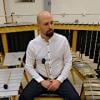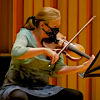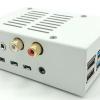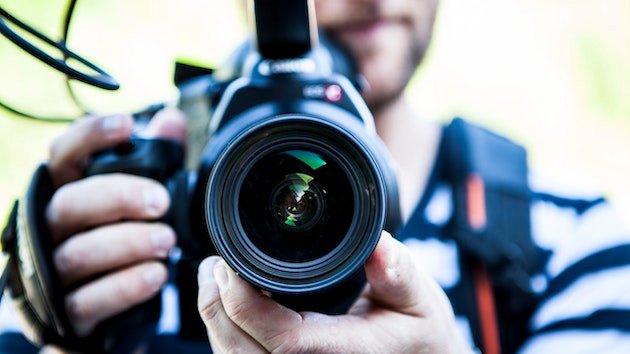
During the 12-month pandemic lockdown, the experiences of classically trained musicians performing for a camera instead of live audiences are strikingly prismatic. The portraits painted in conversations I’ve had with opera and jazz singers, pianist, drummers, electronic and string instrumentalists, and other performing artists in the field fill a broad spectrum. Their responses range from poetic to practical to pensive to feeling trapped-in-a-digital-prison and beyond.
Although their online awareness or level of expertise engaging with digital technology varied tremendously in March 2020 — and updates continue to demonstrate not all is equal when it comes to musicians performing, editing, and producing work digitally — the musicians all say their professional careers now and forever forward will consist of a hybrid of live and virtual performances.
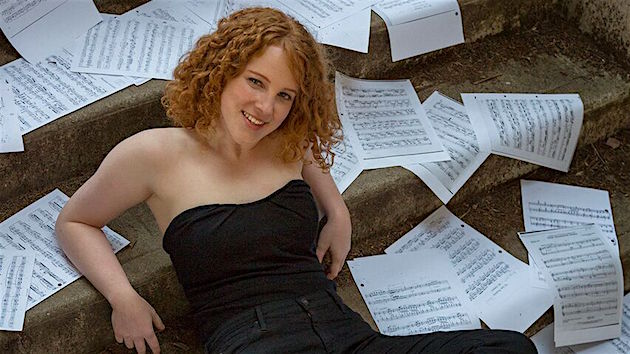
In May 2020, pianist Allegra Chapman told me that turning her face to an audience was never before a part of her performance experience, or at least, it was rare. “I’m not an actor,” she said. “I don’t experience the music with my body in my expressions. Making my face look natural (for camera close-ups in a music video made before the pandemic with soprano Sara LeMesh as part of Chordless Duo), "is a huge challenge to me.” The music video has now screened at four film festivals and won the Best Music Video award at the Tokyo International Short Film Festival, a tribute to Chapman’s acquiring greater confidence and trust in her acting skills.
The same month, soprano Sara LeMesh reiterated Chapman’s point about adjusting facial and gestural approaches to suit the camera’s smaller-than-concert-hall scale for the project. Unlike Chapman’s slightly anxious reply, LeMesh seemed energized and enthused by working with sound engineer Matt Carr to record a video, and eager to learn about recording and editing programs like Sequoia, made by the German company Magix, and Carr’s Izotope RX7, a tool he used extensively for mastering.
Pianist Sarah Cahill in June 2020 was finding on-camera, livestreamed experiences uncomfortable. Artists overall, after reviewing recorded rehearsals or virtual performance sessions of themselves, told me their self-awareness and confidence were enhanced, instructed — or less positively, they felt intimidated, overly self-conscious, or inhibited. The liberation and spontaneous “que sera, sera” of live performance Cahill suggested — despite the availability of real-time, live-chat interactions with virtual audiences — could never be matched online.
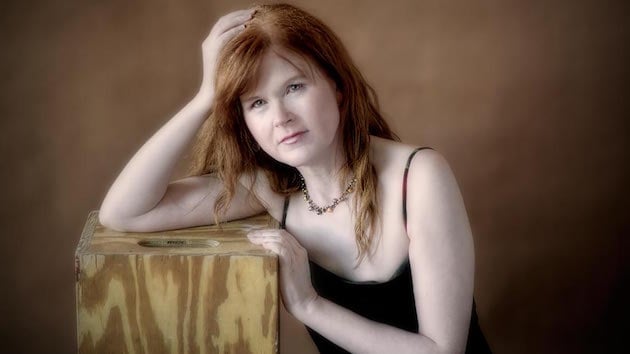
And so it seems like a good time, as the pandemic continues to block live performances in all but a few socially distanced, outdoor shows, to revisit the topic of performing for the camera. Had novice video performers caught up with early adopters of digital technology? Did reluctant users such as Tulsa-based pianist Barron Ryan learn to love livestreaming? For performers like camera-savvy pianist Lara Downes, who several years prior to COVID-19’s devastating impact on live music performances had embraced video and the digital realm, did fresh insights occur? While synchronization barriers continued to stymie musicians when collaborating with colleagues around the world, had the situation improved? (“No,” was the universal answer.) And what role will video and film have when live performances re-commence — for solo artists, orchestras, chamber ensembles, as well as academic and training institutions?
Downes rated herself as “a musician with a camera” at the start of the pandemic and in early February 2021 calls herself “quite proficient on a never-ending scale.” She learned immediately to reconcile any wrangling against virtual presentations after an April 14 NPR Tiny Desk Concert scheduled for a recording session in Washington, D.C., was suddenly to take place in her home. “I had to do a rigorous process of letting go of what I had planned. It was choreographed for D.C., and abruptly, it was in my house. I just slid into a different thing. As soon as I made that adjustment, it felt kind of nice.”
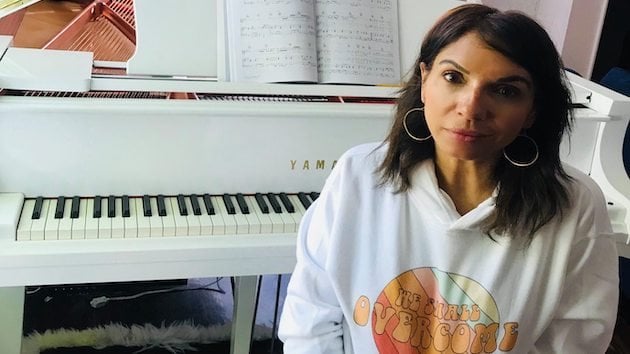
Downes says the authenticity of livestreamed filming for digital platforms — her dog might walk through a sequence, for example — drops the artificial boundaries of performing onstage. Because she was already working with video, Downes had experience handling multimedia projects that reference the visual atmosphere around her music and often were collaborations with poets that include graphics. Even so, she has upgraded her sound and production equipment and says, “To have support for keeping our standards up has been hard for musicians. I like a challenge: Put a rock in front of me and I’ll push a rock. The emotionality of this, there’s a much deeper subtext for everyone. There are so many questions; it’s a hard time. I’m acutely aware of the range of human response to this.”
If Downes’s perspective is largely positive — she highlights that virtual performances reduce the formal aesthetics around classical music, encourage frequent, two-way communication with audiences and collaborators, and eliminate costly travel expenses while opening continent-spanning opportunities for interaction — pianist Ryan is less enamored.
“The most challenging aspect has been dividing my mind to be concerned with another major aspect of performance. Before, a concert was playing and then what I would say between the pieces, but now, it’s everything else. Is the sound level right? Is the video still going? It can be nerve-wracking when something goes wrong. You have a very finite amount of time where you risk losing people. It’s like adding running the lights and being an usher at the same time as you are performing when you’re in a concert hall. I find it harrowing, but that might be excessive ... OK, we can say that; it’s a fun word.”
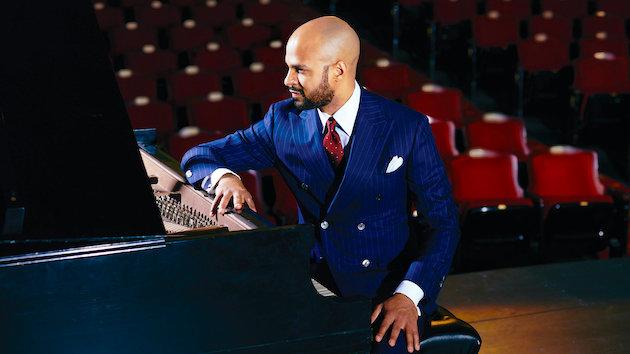
What was not fun was what happened during Ryan’s first livestream. The video performance started 30-minutes late and the stream crashed when the image exceeded his bandwidth. “I finally figured out how to get it going in a lesser quality than I had anticipated,” he says. “I did the concert, and after, I emailed everybody who had purchased tickets and offered another concert the next week without pay, or a refund.” Out of about 150 tickets sold, only one person wanted a refund. Ryan says the generosity and support reinforced his hope that the demand for music would survive the pandemic. “If they can’t get it in person, they will watch, contribute, and even get a new skill set to find me online and purchase access.”
Despite feeling bolstered and valued by the lengths to which people will go to hear him play live online, livestreaming will not become a large part of Ryan’s work. For him, the in-person, real-time, musician-audience connection is a vital lifeline. “But putting together prerecorded videos, I will certainly do that. With those, I can do multiple takes, I can add other videos I’ve shot and then stream them together. I do plan to offer those presentations, if there’s a demand.”
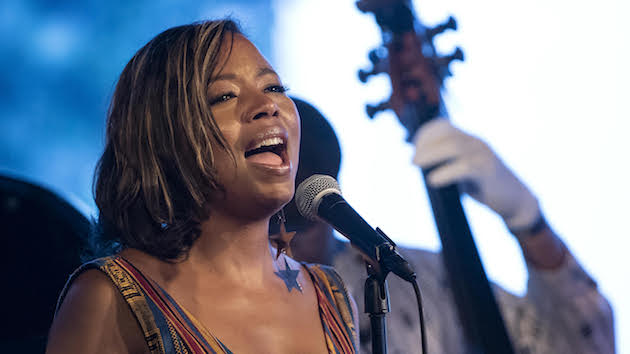
Jazz vocalist Tiffany Austin calls herself “a reluctant intermediate,” when ranking herself as a video performer. She says the energy exchanged between the audience and performer during a live show is entirely lacking online, causing a big adjustment. “I tell myself it’s like performing at a school assembly where all the children have been told to be quiet. I’ve devised mental tricks like that to deal with the lack of response.” The novelty of doing a performance in a bathrobe or on a smart phone has long worn thin.
With gradual, grudging acceptance of long-term lockdown reality and wanting to stay in touch with people, she searches for the silver lining of virtual work. “I don’t want a bunch of videos shot on my phone to be the first entree into my art. I want people to see me properly: videos with great production and editing. I prefer to craft a set in a physical, musical space. I am the queen of the Luddites: I don’t like new technology, but since COVID-19 hit, you have to spend time on devices. It’s somewhat shaken off that reluctance to create digitally. That’s been beneficial.”
Asked if she will continue to expand her live performances with video projects in the years to come, Austin is doubtful. “Just setting up equipment onstage with the band is a part of the communion of making music. I anticipate I’ll be exhilarated by having the exchange with the audience again when we can go back to live performance. The smiles and interactions are galvanizing. With COVID, which is so isolating, it reminds us that music is interactive, communal.”
Austin says the power for musicians to “create their own gravity” online, independent of “traditional gatekeepers,” and evidence of music’s vital roles during the pandemic — as a balm, a vehicle for underscoring injustices, a rejuvenating source of unifying energy for everyone — is an equalizing, profound force and to be cherished.
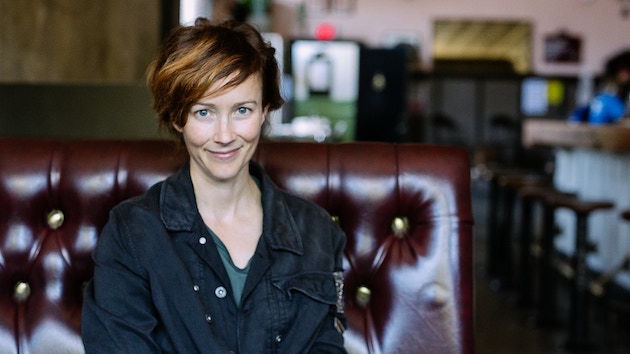
Vocalist and composer Majel Connery, whose work skates easily within pop, jazz, electro, and classical-music arenas, sorely misses the vulnerability, energy, and “those moments when your whole body lights up onstage in a way it doesn’t on camera.” At the same time, she says, “It’s important to stress that over the past couple of decades, we’ve all become accustomed to social-media platforms, self-made videos, and YouTube channels. We’re all hybrids already.”
Reduced to performing in front of a camera in livestream shows, she’s realized making music communally and in-person is 100 percent critical to her well-being. “It’s a sad realization,” she admits. But while looking for a silver lining in the pandemic shutdown — or at least something to gain upon reflection — she finds several insights. Live chats during performance sessions can create that human-to-human buzz she craves while she’s unable to perform live; YouTube videos are her audience’s favorite streaming service and something she no longer ignores; having previously considered herself “a physical blunderbuss and quite a disaster,” she’s become more aware of her physicality and is discovering new ways to move beyond “steely stillness” to integrate “organic, intense, maybe even sexy dancing.”
Most ironically, Connery has recognized a social distancing she had begun to create even before COVID-19: “As an electronic musician, I was building a larger and larger wall of technology in front of me. It was technology placed between my body and the audience. I was erecting a barrier without realizing it.” In future, she plans to play the piano and sing, getting rid of the three synthesizers, a laptop, amplifiers, and multiple microphones. Experiments with controlled shouting, whispering, pounding rhythmically on her chest for long portions of a song, she says have produced a more embodied approach that she plans to bring to the stage and use while recording a solo album she hopes to release in the fall.
Connery predicts that having gained fluidity and understanding of video editing cuts, transitions, lighting, and “high-contrast camera perspectives that tell a story and don’t just linger on my face” will mean that virtual work will be “super integral” as she moves forward. She wants a handheld camera, control of the product ... but more than anything else, Connery wants to be back on real stages with real musicians and live audiences.
Returning to LeMesh and Cahill, the two musicians who in early 2020 expressed their fledgling reactions to performing for camera, their self-confidence has definitely increased. And not just on camera.
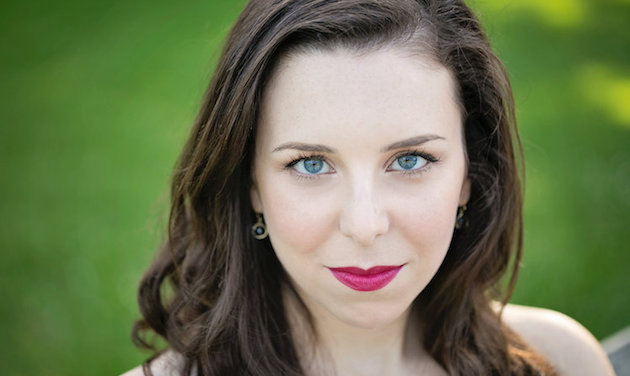
LeMesh says advancing her online skills has introduced subtlety and nuance. “I was taught to exaggerate my gestures and think of body language. With film, I enjoy the ability to look at a camera, raise my left eyebrow a millimeter and it represents the same thing as someone slouching onstage. It allows facial character work to be effective. The slouched eyebrow is more than just looking at somebody’s face. There’s intimacy in that closeness.” LeMesh believes for audiences, the digital format is like turning up the volume, especially for people who traditionally have been in the nose-bleed balcony seats. “It means the art form of opera might be even more meaningful on film. Certainly, film is here to stay,” she insists. As confidence in self-directing her video projects has grown, LeMesh envisions herself collaborating with designers to produce a film, choosing the repertory for videos, and occupying the “driver’s seat.”
“We’re all directing, without even realizing it,” says LeMesh. “Opera singers learn their music and have thoughts about it but defer to the director and conductor. Now, we have more agency in these virtual at-home projects. Do you trust yourself? That’s harder than just having your face on a camera.”
Cahill today rates herself as intermediate/experienced as a virtual performer. She’s learned to modulate her sound — pianissimo played in a large hall cannot be heard by someone 40 rows out, but online and magnified, it’s easily audible to everyone. Closeup camera shots still cause her to worry: Is the tag of my dress showing? Will someone question my hand positions? She avoids tight framing that amplifies her face and might exaggerate subtle, micro-expressions of passion, anguish, or rapture. Even so, she has gained appreciation for presenting her best physical self and expects it will translate as greater confidence when she’s able to return to the stage. Although strict about following protocols when filming streamed segments in near-empty concert halls, she dislikes but will endure the continued use of masks that obscure the keys when she looks down.
It’s touching when she mentions what she misses most about live performances. “We’re all putting up with this while we need to, but honestly, I miss hugging people! Even people I don’t know. Or doing things with composers and other musicians after a show. To go to the SF Conservatory now, it’s scary; double mask, hand sanitizers, a light comes on to start and there’s nobody there for response. I can’t wait to get back to playing concerts in person. Still, I can see video’s importance as documentation. A concert played on a local level can become something viewed around the world. I can see myself continuing some virtual projects.”
Appointed artistic director of Healdsburg Jazz Festival in September 2020, bandleader, composer, and bassist Marcus Shelby has spent the last six months in endless online conversations about programming, virtual music instruction, livestream performances, and more. The pandemic forced him to leap from digital novice to an average user of the format. “I had an iMac I hadn’t used since 2016. I dusted it off and I’ve created a whole Zoom room for the work I’m doing now,” he says.
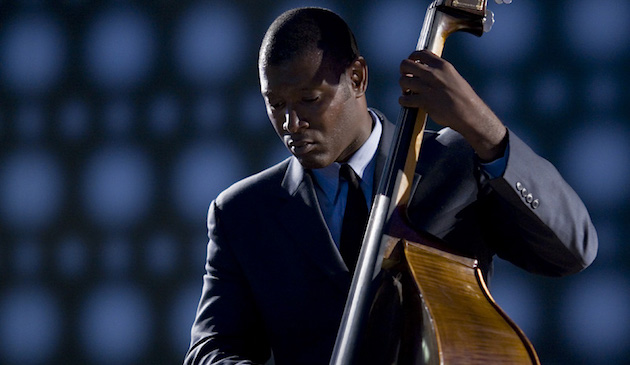
Speaking broadly about his experience and also the stories he hears from musicians worldwide, Shelby suggests the pandemic slowdown allowed people to reflect, learn technology skills, and imagine songwriting, producing, presenting, performing, and teaching music in new ways. “For a lot of musicians, there’s pressure to always be gigging nightly. The pandemic has shifted that paradigm. We’ve had to learn how to make a living in music online. Now I teach on Zoom all the time. I’ll continue to do it long after the pandemic ends. Our whole programming, education, choirs, everything has been altered to be online. We’ve had to adjust and grow.”
One personal practice — online or live — Shelby says will never change. “Always play hard, even if there’s only one person out there. I remember a television broadcast of Branford Marsalis playing with Jeff Watts, Bob Hertz, and Kenny Kirkland. They were giving their A-game and there was no one in the club. When I’m performing on Zoom, I’m not thinking I don’t have to play hard or prepare for the gig.”
Reflecting on the thoughts of these artists who generously devoted time to speak with me, I find the most dangerous, loaded question remains unasked and yet to be answered: What do audiences have to say about viewing music performances online?
I can’t and won’t speak for others, but for me, I’m not always thrilled when the camera decides I have to watch a certain solo violinist or opera star when I’d rather be watching the timpani section or a member of the choir who appears sleepy or distracted by a costume. On the other hand, there is no ticket that affords access to be 10 inches from a string on Yo-Yo Ma’s cello when it bursts and shimmers like lightening against a dark backdrop.
Ultimately, virtual performances will never convey to me the human body’s elusive, intangible choreography when seen live, or carry the near-palpable energy as a dynamic performer meets my eye, or appears to, and the connection is felt in a way that can only be called electric. Which means that much like the musicians, this viewer’s experience remains prismatic and she can’t wait for musicians to once again be real, live, onstage.


